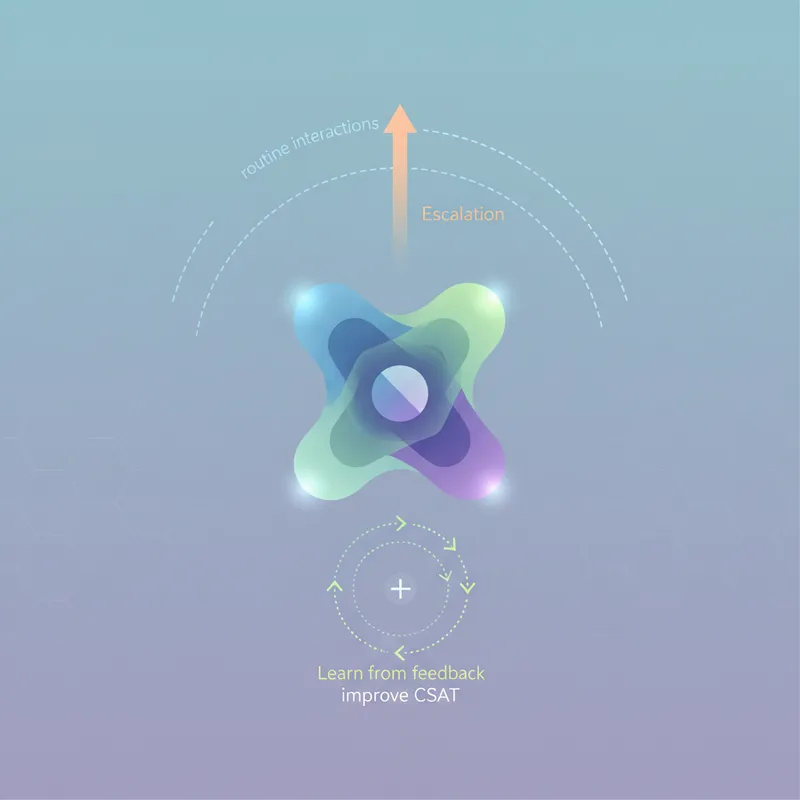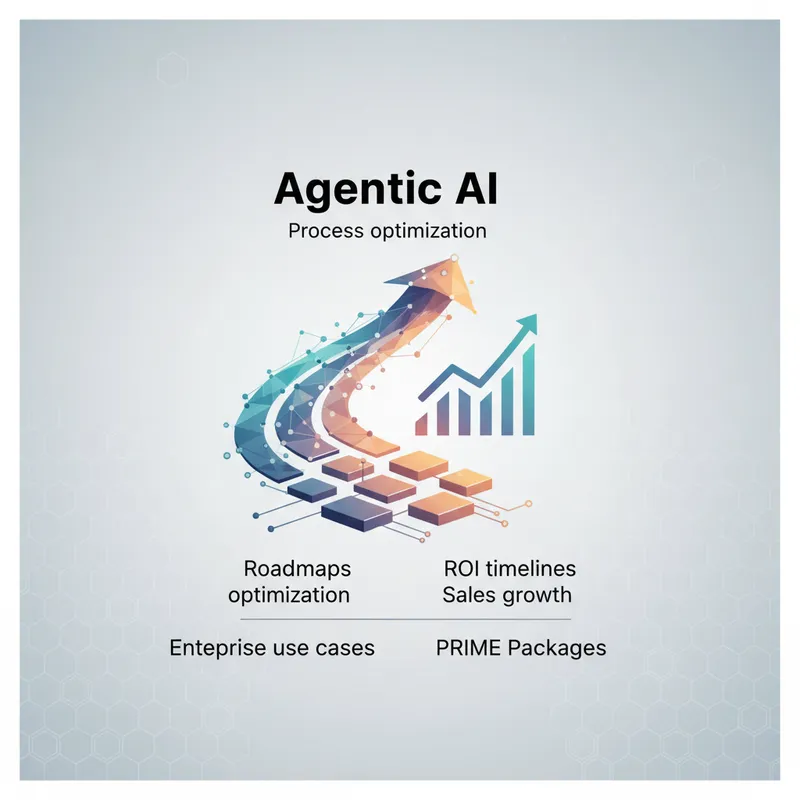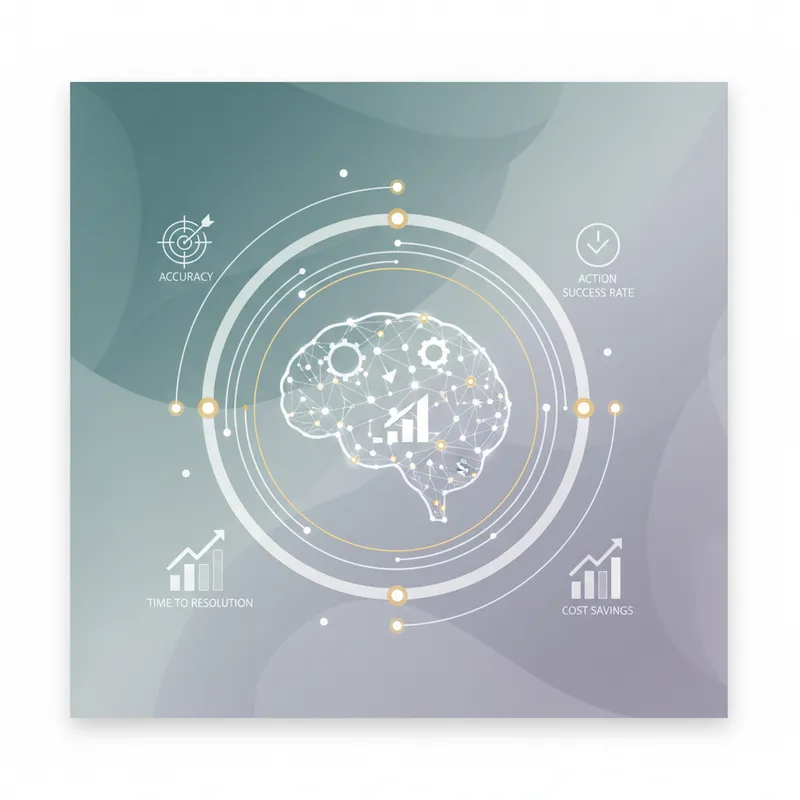
Introduction
Before an AI system touches enterprise workflows, teams must understand what they plan to automate. Process mapping for AI automation is the practice of documenting every actor, input, decision point, and exception so that an AI solution can be designed, trained, and monitored with confidence. When teams skip mapping, projects stall, models make incorrect choices, and hidden edge cases create costly failures. This guide gives a practical, step by step checklist to map processes in a way that leads to reliable automation outcomes. Learn more in our post on Building Autonomous AI Agents for Customer Service Automation.
The guidance below walks through stakeholder identification, input and output inventories, decision trees, exception cataloging, data requirements, validation rules, handoffs, and metrics. Each step includes what to capture, why it matters for AI, questions to ask, and how to turn findings into a clear design brief for engineers and AI specialists. Whether you are starting with a simple task or a complex cross team workflow, adopt the checklist to make your automation project faster, safer, and easier to maintain.
This post is written for product managers, process owners, business analysts, and automation teams who must translate human processes into reliable AI driven workflows. Use the checklist as a living document that evolves as you learn. With careful process mapping for AI automation you reduce risk, boost accuracy, and increase stakeholder confidence in automation rollouts.
Why Process Mapping Matters for AI Projects
AI systems learn from patterns and make decisions based on training data and rules. They are excellent at repeating well defined tasks but fragile when required to handle undocumented exceptions. Process mapping for AI automation makes implicit knowledge explicit. It reveals assumptions, documents edge cases, and clarifies the exact inputs and outputs that an AI model will need to reason about. Learn more in our post on ROI Playbook: Quantifying the Impact of Agentic AI Projects.
When you invest time in mapping, you create a single source of truth. That truth is used to design training sets, craft prompts, define validation checks, and build monitoring rules. With detailed maps, teams can break a complex workflow into smaller automation opportunities. Each micro automation can be assessed for technical feasibility and risk prior to development.
Another key benefit of process mapping for AI automation is stakeholder alignment. Mapping sessions force cross functional teams to agree on definitions and success criteria. When product, operations, legal, and data science teams review a unified process map, they can raise concerns early. This reduces rework after automation is built and encourages shared ownership of outcomes.
Finally, mapping supports compliance and auditability. Documented workflows make it possible to trace decisions back to inputs and logic. That traceability is essential when an automated decision affects customers or regulatory outcomes. Process mapping for AI automation helps you demonstrate why a system took a certain action and what humans validated during training and testing.
Core Elements to Document Before Automating
Keep the following elements in the checklist you will use for process mapping for AI automation. Each element helps downstream teams build robust, explainable, and maintainable automation. Learn more in our post on AI vs Traditional Automation: When Agentic AI Delivers Superior Outcomes.
- Stakeholders: Identify who participates in or is affected by the process.
- Scope: Define start and end triggers, and what the automation should and should not do.
- Inputs: List data sources, formats, and required quality levels.
- Outputs: Specify results, notifications, and downstream consequences.
- Decision points: Map where choices are made, by whom, and by what rules.
- Exceptions: Catalog every known edge case and how it is resolved today.
- Constraints: Note regulatory, security, and performance limits.
- Success metrics: Agree on accuracy, time saved, throughput, and error rates.
Each of these elements must be captured with examples. For inputs and outputs, include sample records. For decision points, include the exact rules or criteria and rank them by importance. For exceptions, capture frequency and current workaround steps. That level of detail prevents costly assumptions during AI model design and integration.
Stakeholder Inventory
Start by creating a stakeholder roster. List names, roles, and responsibilities in the process. For each stakeholder, record what decisions they can escalate, what inputs they provide, and who they hand off to. Include both internal and external stakeholders.
Why this matters for process mapping for AI automation: understanding permissions and accountability informs model design choices related to human in the loop controls, approval gates, and audit logs. When stakeholders are mapped, you can design a system that escalates decisions appropriately and preserves human oversight where needed.
Inputs and Data Quality Requirements
Document each input the process consumes. For each input provide format, example values, frequency, and owner. Note where the data originates and how it is currently validated. Identify missing values and common data quality issues.
Data quality is a frequent cause of AI failures. Process mapping for AI automation that includes a rigorous input inventory allows engineers and data scientists to decide whether to build preprocessing steps, require manual validation, or reject low quality inputs. Specify acceptable ranges and fallback strategies when inputs are incomplete.
Step-by-Step Checklist: Map the Process Before Building AI
Use the following checklist in a workshop format. This ordered approach helps teams converge on a production ready automation design. Treat the checklist as a living artifact and update it after pilot runs.
-
Define scope and desired outcome
Write a short problem statement and the target outcome the automation should achieve. Include boundaries. For example, if you automate invoice validation, specify whether matching to purchase orders is included.
-
Assemble stakeholders
Bring together subject matter experts, process owners, data stewards, compliance leads, and an engineer or AI specialist. Schedule a mapping workshop with clear goals and prework.
-
Map the current state
Use a whiteboard, flowchart, or table to capture every step. For each step, record actor, input, output, decision point, and time to complete. Capture handoffs and systems used.
-
Identify decision logic
For each decision point, document rules, thresholds, and subjective judgments. Note decisions that use judgment rather than fixed rules, and rank them by frequency and impact.
-
Catalog exceptions
List all exceptions, their frequency, current resolution steps, and the personnel who resolve them. For each exception, assess whether it can be automated or requires human oversight.
-
Collect sample data
Gather representative samples for each input type and for each exception. Label samples when necessary to support supervised learning. Include minority or rare cases to avoid model blind spots.
-
Define acceptance criteria
Agree on measurable success criteria such as precision, recall, time saved, or decreased manual touches. Translate business value into measurable KPIs.
-
Design for monitoring and recovery
Specify logs, alerts, and fallback behaviors. Decide whether to include human review for certain confidence thresholds or types of exceptions.
-
Plan the rollout and feedback loop
Design a phased rollout with pilot groups, performance reviews, and channels for users to report issues. Include a plan to retrain or adjust models as new exceptions appear.
Each item produces artifacts that feed into development. Typical deliverables include process diagrams, decision tables, labeled datasets, exception registries, and a test plan. These artifacts are required to scope engineering work, estimate effort, and design safe automation.

How to Map Decision Points for Reliable AI Behavior
Decision points are where automation succeeds or fails. Each decision must be mapped with enough detail for an AI system to replicate it reliably. Use decision tables to convert subjective checkpoints into structured logic. For each rule include inputs, conditions, expected outputs, and example cases.
When mapping decisions for process mapping for AI automation, capture how humans reach their conclusions. Ask experts to verbalize their thought process. Record conditional statements such as if input A is present and value B exceeds threshold C then route to X. Include alternate paths and the reasons for choosing each path.
Include confidence indicators and fallback rules. If the model is unsure, you may specify automated retries, requests for clarifying inputs, or an escalation to a human. Designing these paths reduces the chance of silent failures and helps teams maintain service levels.
Decision Tables and Examples
Decision tables are powerful because they are both human readable and machine friendly. A decision table should list conditions in header rows and actions in the body. Populate the table with typical and edge case examples. This structure supports rule based systems and training data labeling alike.
For process mapping for AI automation, convert decision tables into test cases. Each row becomes a test scenario with expected outputs. Use these scenarios during model validation and in continuous monitoring to detect regressions.
Documenting Exceptions and Edge Cases
Exceptions often carry the highest operational risk. They are rare but may have high cost. A thorough process mapping for AI automation includes an exception registry that covers the nature of the exception, triggers, current mitigation, business impact, and frequency.
When you document exceptions, prioritize them by impact. Create remediation flows and assign owners for each exception type. Decide which exceptions will be automated, which require human review, and which will trigger rejection or manual rerouting.
Label example data for each exception category. Rare events require special handling during model training. If you cannot obtain real examples, craft synthetic but realistic samples and annotate them clearly. That approach reduces the risk of an AI system failing silently in production.

Turn the Map into an AI Design Brief
Once you have a process map, convert it into a concise AI design brief. The brief should be a living document that summarizes scope, success metrics, data requirements, decision logic, exception handling, monitoring plans, and rollout steps. Include links to source artifacts and labeled datasets.
Use the brief to align product, engineering, and data science. The brief should answer key questions: What will the AI decide? What confidence threshold is acceptable? When does the system ask for human help? How will you measure improvement? How will you log decisions for auditability? A clear brief reduces iteration cycles and helps developers estimate work more accurately.
Include a prioritized backlog of automation tasks derived from the map. Not every step should be automated at once. Use the map to identify small, high value automations that can deliver immediate return while building the data foundation for more complex automation later.
Testing, Validation, and Monitoring Strategy
Testing is not a single event it is a lifecycle. Use the process mapping for AI automation deliverables to generate test cases covering normal flows and exceptions. Create labeled validation sets that reflect real world distributions and rare but critical cases.
Define performance thresholds before deployment. Track both model metrics such as precision and recall and business metrics such as throughput, time saved, and customer satisfaction. Set up alerts for significant drops in model confidence or unexpected spikes in exceptions.
Design a human in the loop mechanism for incremental deployment. For example, route low confidence cases to reviewers and use their decisions to continuously expand your labeled dataset. Use canary releases and phased rollouts to validate impact before expanding to all users.
Monitor for Drift and Update the Map
Data drift will change model behavior over time. Monitoring should look for shifts in input distributions, increases in exceptions, and degradation in downstream KPIs. When drift is detected revisit the process map to identify root causes and update training data or decision rules accordingly.
Process mapping for AI automation is not a one time activity. Treat the process map as a living document that evolves with the business. Schedule periodic reviews with stakeholders to capture changes in business rules, system integrations, or compliance requirements.
Handoff to Engineering and Data Teams
A well documented map simplifies handoff. Provide engineers with a prioritized backlog, labeled datasets, decision tables, and a clear acceptance criteria checklist. Include the expected API inputs and outputs, sample payloads, and error codes for each failure mode.
For data teams, include data lineage details. Specify fields to be used for training, fields to be redacted for privacy, and fields that act as identifiers versus features. Clear data contracts reduce integration disputes and speed up development.
Include a deployment runbook that lists production monitoring dashboards, owner on call, rollback procedures, and communication protocols. This ensures that the team can respond quickly if the automation behaves unexpectedly.

Common Pitfalls and How to Avoid Them
Many AI automation projects fail because of incomplete mapping. A common pitfall is assuming that a process is simple. Hidden business rules lead to mistaken automations. Avoid this by asking experts to walk through multiple real examples from start to finish during the mapping session.
Another frequent error is ignoring rare exceptions. Teams optimize for the common path and fail to capture outliers. Process mapping for AI automation must include mechanisms to identify and collect rare cases so that the model does not develop blind spots.
Overreliance on historical data without validating its quality is also risky. Historical logs may contain undocumented manual corrections. Inspect the data and label where humans applied judgment. Use those labels to teach the model when to defer to a human.
Finally, insufficient monitoring is a recurring issue. Deploying a model without real time metrics and alerts leaves teams blind to failures. Include monitoring metrics as part of the process map and assign clear owners who will respond to incidents.
Scaling and Maintaining Automation Over Time
Start small, iterate fast, and plan for scale. Use process mapping for AI automation to identify reusable components and standard interfaces. Common building blocks include input validation modules, confidence scoring services, and human review workflows. Standardization reduces duplication and speeds new automation development.
Maintain a central repository of process maps and automation artifacts. Track changes to maps and datasets with version control. Document why decisions were made. When multiple teams build automations across the same domain, a centralized approach prevents contradictory behaviors and improves maintainability.
Allocate resources for ongoing labeling and model retraining. Real world data evolves and models need new examples to remain accurate. Use the process map to identify high value labeling opportunities and schedule periodic retraining cycles tied to performance thresholds.
Sample Mini Case and Checklist Walkthrough
Imagine a customer onboarding process that includes document submission, identity verification, and account creation. Using process mapping for AI automation, start with a current state map. Identify the inputs such as ID images, form fields, and verification signals. Map the decision points such as match score thresholds and fraud flags.
Catalog exceptions like blurry images, mismatched names, or missing documents. For each exception capture the current human resolution steps. Collect sample records of successful, failed, and exception cases. Build decision tables for identity verification rules and define confidence thresholds for automatic approval versus manual review.
Create acceptance criteria such as 98 percent true positive rate for verified identities and under 5 percent false accept rate. Design monitoring dashboards for daily verification distribution and exception rates. Pilot the AI model with a sample of low risk accounts and route low confidence cases to a human reviewer while logging outcomes to improve the training set.
That systematic checklist based on process mapping for AI automation allows teams to deliver a safe and measurable automation that reduces manual effort while preserving control over high risk decisions.
Action Plan and Next Steps
Use the following action plan to move from mapping to pilot. Each step maps directly to the checklist above and ensures measurable progress.
- Schedule a mapping workshop and assign a facilitator.
- Gather sample inputs and exception examples before the workshop.
- Create a current state process map and decision tables during the workshop.
- Build labeled datasets and decision logic artifacts as output of mapping.
- Draft an AI design brief and prioritize automation targets.
- Develop a pilot with monitoring and human review paths.
- Iterate based on pilot performance and update the process map accordingly.
Following these steps ensures your automation project moves from theory to production with clear expectations and risk controls. Use the artifacts to accelerate future automation efforts across the organization. Keep the process mapping for AI automation documents updated so your automation landscape remains transparent and resilient.
Conclusion
Process mapping for AI automation is an essential discipline that bridges business knowledge and technical execution. Investing time in mapping outcomes and decisions yields dividends in fewer surprises during development, faster delivery, and higher trust from stakeholders. The checklist in this guide covers the core elements to capture: stakeholders, inputs, decision points, exceptions, data, acceptance criteria, and monitoring plans. These elements inform both tactical model building and strategic governance.
Start your next automation project by convening the right people, collecting representative data samples, and documenting decisions with examples. Use decision tables and labeled datasets to translate human judgment into machine actionable logic. Design human in the loop controls for low confidence cases and plan a phased rollout to validate real world behavior. Treat process maps as living artifacts and schedule regular reviews to capture changes in rules or business context.
When teams follow a structured mapping practice they reduce technical debt and build systems that are easier to maintain. Automation efforts become modular and repeatable so new use cases can be developed faster using shared building blocks. Prioritize visibility and auditability so that compliance and quality reviewers can trace automated outcomes back to documented rules and data samples. That traceability builds confidence across the organization and improves user acceptance.
Finally, monitor and iterate. Establish metrics for both model performance and business impact. Use those metrics to trigger retraining, rule updates, or changes to the human review process. With diligent process mapping for AI automation you will deliver higher quality automation, reduce costly rollbacks, and create a foundation for scaling intelligent workflows across your business. Invest in mapping now to accelerate automation with clarity and control.



